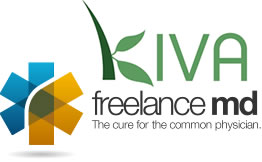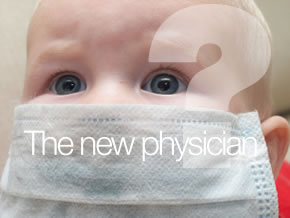 Physician Leadership and Pornography: we know it when we see it.
Physician Leadership and Pornography: we know it when we see it.
Let's Do Better Than Justice Stewart
In the most frequently quoted Supreme Court opinion on obscenity, Justice Potter Stewart remarked, "I shall not today attempt to define the kinds of material I understand embraced within that shorthand description (pornography); and perhaps I could never succeed in intelligibly doing so, but I know it when I see it...
Justice Stewart was tasked with looking at a fair amount of pornography before coming to his conclusion (no pun intended). Physician Leadership, like pornography, may be hard for some of us to define, but most of us recognize it when we see it.
Let's take a look at one such leader and see what we can learn. Are there defining skills of Physician Leadership and, if so, what are they? We'll outline some these skills in bold italics as we proceed. Maybe we can do better than Justice Stewart did with pornography and begin to define Physician Leadership as we see it.
Two weeks ago, at the Leapfrog Group's 10th anniversary gala, Virginia Mason Medical Center (Seattle,WA) was designated the "Top Hospital of the Decade". This prestigious award was given in recognition of VMMC's public commitment and acheivements in reducing medical errors and innovations and improvements in patient safety and quality of care. These accomplishments were due, in great part, to the physician leadership of VMMC's CEO Dr. Gary Kalpan.
No one would have predicted that VMMC would win such an award when Dr. Kaplan took the helm in 2000. The system had been in the red for two consecutive years, its outcomes were inconsistent, and it was struggling with quality control in its far reaching outpatient clinics in the Puget Sound area. Having read the two disturbing reports from the Institute of Medicine: To Err is Human and Crossing the Quality Chasm, Gary recognized the he would need to change the status quo.
In his initial review, Gary, perhaps due to his training as an internist, came to the realization that, while he might have been charged with stopping the financial hemorrhage, he needed to address the underlying cancer causing the hemorrhage: suboptimal quality. He was determined to define quality and measure it objectively. He was able to think prospectively, "how do we become better at what we do?" rather than retrospectively, "how did we get into this mess?" He was able to articulate and sell this perspective to his Board of Directors and his staff. He had vision.
To achieve his goal of measurable excellence in quality, Gary looked for models already in place in the best of America's healthcare systems. He traveled extensively, spoke with other physician leaders and inspected their facilities. He concluded that none of them had what he was looking for. While others in his position might have been dejected, Gary remained optimistic and determined to reach his goal. His creativity enabled him to look outside of healthcare for his solution and he found it, surprisingly, in the car manufacturing industry with Toyota Corporation's lean thinking. Gary began systematically sending VMMC's leaders to Japan for training and began implementing lean principle's in VMMC's everyday operations.
No great stories end without a twist. A major challenge to Gary's "quality first" mantra occurred in 2004 with the death of patient due to the inadvertent injection of a toxic cleansing solution during an interventional radiology procedure. While others might have settled this matter quietly and discretely, Gary went public. He recognized that leadership demanded accountability and transparency. He saw a system failure as an opportunity for further improvement. E-mails were sent to the staff acknowledging the error with the recognition that this would immediately become public information. The family was informed and a formal apology was issued. The anniversary of this patient's death is acknowledged system wide as a reminder to all of the importance of the "quality first" mission.
Hats off to Dr. Gary Kaplan and VMMC in this accomplishment. Let's begin to recognize and define the leadership skills he has demonstrated: vision, determination, prospective thinking, creativity, optimism, accountability, dissatisfaction with the status quo, and the ability to see failure as an opportunity. Let's begin to develop a cadre of physician leaders who can master these skills. Let's do better than Justice Potter did with pornography, let's define Physician Leadership.
 Freelance MD's Kiva lending group for micro-loans to Third World entrepreneurs.
Freelance MD's Kiva lending group for micro-loans to Third World entrepreneurs.




 Post a Comment
Post a Comment





